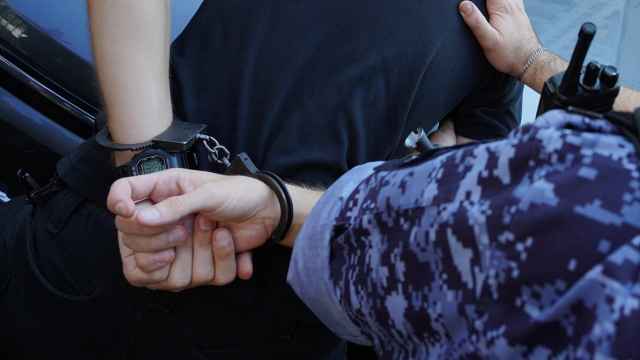Peter Hufschmied was the engineer charged with diverting runoff water from a rail tunnel under the Bernese Alps when he remembered a 1995 trip to Moscow's Bolshoi Theater and his first bite of caviar. Maybe the warm geothermal streams could feed Switzerland's first sturgeon farm, producing Alpine caviar to rival Russian brands that dominate the market.
"Sturgeon was anchored in my memory," Hufschmied said. "After the first taste, I was hooked. I thought it was a great product that would be a hit in Switzerland."
The Tropenhaus farm envisioned by Hufschmied started to deliver caviar from Siberian sturgeon in November after securing $40 million of funds from Coop, the second-biggest Swiss retailer, and lenders including Berner Kantonalbank. The project is tapping global demand that is about 2 1/2 times last year's farmed output of 140 tons.
"The farmed sturgeon market is thriving," Peter Rebeiz, chief executive of Geneva-based Caviar House & Prunier, which owns 50 shops worldwide. Switzerland ranks among the four biggest caviar markets in Europe, said Rebeiz, who owns the largest sturgeon farm in France.
Tropenhaus's No. 101 Oona-brand caviar costs as much as 1,530 Swiss francs ($1,632) for 250 grams of the fish eggs. That compares with 2,400 euros ($3,091) for the same-sized tin of Beluga caviar sold by Paris-based Petrossian, which sets a reference for global prices.
Wild sturgeon, which have been around since the time of the dinosaurs, can take 20 years to reproduce and stocks have slumped 90 percent from overfishing, according to the International Union for Conservation of Nature in Gland, Switzerland. Beluga and other Caspian Sea species, which can grow to five meters in length and live for 100 years, are threatened by extinction, the organization said.
Using the 20 degrees Celsius runoff water from the Lötschberg Basis tunnel allows the Tropenhaus farm in Frutigen, south of the Swiss capital Bern, to harvest roe from female fish when they are just 6 years old.
"In Russian waters, the sturgeon live at temperatures of 2 degrees in the winter," Patrick Guefel, head of aquaculture at Tropenhaus, said in an interview in Frutigen. "Here we can provide them with permanent summer temperatures so they develop more quickly."
The warm mountain water not only serves the sturgeon farm, it heats the Swiss greenhouse, where tropical plants and fruit are grown.
"I thought that the water's energy could be used for a sustainable warm-water fish farm," said Hufschmied, adding that the runoff was too warm to discharge into the nearby Kander River.
To get its black caviar, the Tropenhaus farm anesthetizes the sturgeon, as is required by Swiss animal rights law, before killing it. The roe is then collected by hand and salted. The fish filets are smoked and served in the adjacent restaurant.
"Brands are the future and will help consumers to differentiate between the various qualities," said Alexander Zwyer, CEO of a Teufen, Switzerland-based family-run firm that sells Uruguayan caviar to the Hotel Baur au Lac and Dolder Grand in Zurich and Harrods in London. "Switzerland will absolutely be able to assert itself in the global caviar market, at least in the premium sector."
Farmed production has soared to about 140 tons last year from 500 kilograms in 1998, according to Armen Petrossian, head of Petrossian, the company that introduced caviar to the West after the Russian Revolution.
"The quality of farmed caviar has improved with improvements in the technical production," Petrossian said from Paris. "Nowadays there are methods to check the quality of the roe, like doing an autopsy, which allows you to see the eggs before harvesting."
Petrossian, founded in Paris in 1920 and with restaurants and shops in the French capital, New York and Los Angeles, expects farmed caviar production to double in eight to 10 years.
The first 300 kilograms of Oona caviar is earmarked for the local market, with the Swiss department store Jelmoli selling the product since November. Tropenhaus is targeting annual output of as much as three tons within four years with two-thirds of that exported, said Andreas Schmid, head of marketing and sales.
Hufschmied, who owns a stake in the farm, hopes that the brand finds more fans when the World Economic Forum meets next week in Davos.
"Our Oona caviar is produced in a sustainable, authentic way, with the usual Swiss diligence," Hufschmied said. "We are proud of the quality."
A Message from The Moscow Times:
Dear readers,
We are facing unprecedented challenges. Russia's Prosecutor General's Office has designated The Moscow Times as an "undesirable" organization, criminalizing our work and putting our staff at risk of prosecution. This follows our earlier unjust labeling as a "foreign agent."
These actions are direct attempts to silence independent journalism in Russia. The authorities claim our work "discredits the decisions of the Russian leadership." We see things differently: we strive to provide accurate, unbiased reporting on Russia.
We, the journalists of The Moscow Times, refuse to be silenced. But to continue our work, we need your help.
Your support, no matter how small, makes a world of difference. If you can, please support us monthly starting from just $2. It's quick to set up, and every contribution makes a significant impact.
By supporting The Moscow Times, you're defending open, independent journalism in the face of repression. Thank you for standing with us.
Remind me later.






